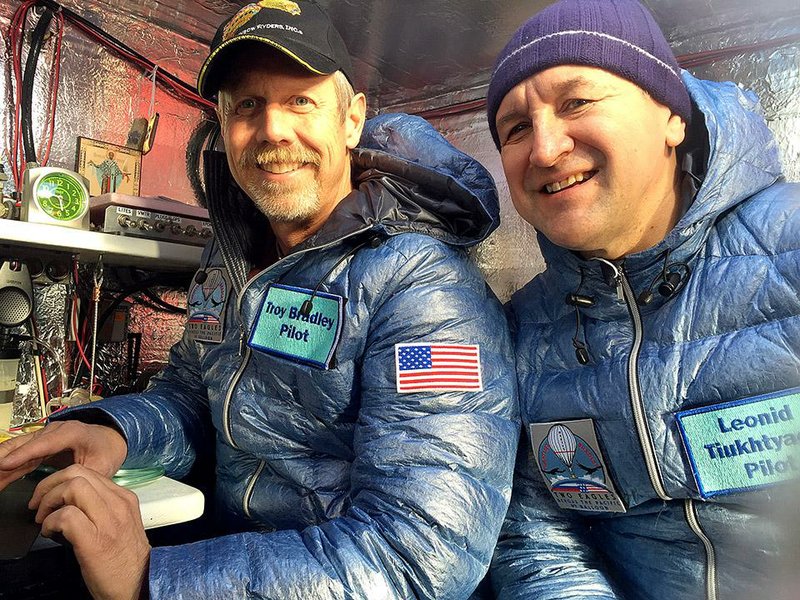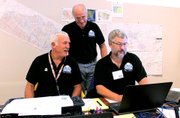ALBUQUERQUE, N.M. -- A pair of American and Russian pilots has traveled farther and longer in a gas balloon than anyone in history, trying to eliminate any debate over a century of records in long-distance ballooning.
The Two Eagles pilot team surpassed the distance and duration records that have held since the 1970s and 1980s, and the pilots were aiming Friday for a safe landing somewhere on a beach in Mexico's Baja California peninsula.
Troy Bradley of Albuquerque and Leonid Tiukhtyaev of Russia lifted off from Japan on Sunday morning, and by Friday, they beat what's considered the "holy grail" of ballooning achievements: the 137-hour duration record set in 1978 by the Double Eagle crew of Ben Abruzzo, Maxie Anderson and Larry Newman in the first balloon flight across the Atlantic.
By Friday afternoon, the Two Eagles team had been in the air more than 143 hours and was also smashing the distance record, having traveled more than 6,000 miles across the Pacific Ocean.
"The technology has improved so much in the last couple of years. I don't think there's going to be any question about the records," said Katie Griggs, a regional director with the nonprofit Balloon Federation of America.
The world has been tracking their progress online and through social-media sites. Still, the official distance and time of the Two Eagles flight must be confirmed by the Federation Aeronautique Internationale, which requires staying aloft 1 percent longer and farther than the previous record to earn a new one.
The balloon is outfitted with an array of monitors and other instruments that are tracking its course and compiling the data, using technology that didn't exist in decades past.
Their first target was the official distance record of 5,209 miles set by the Double Eagle V team during the first trans-Pacific flight in 1981. They surpassed that Thursday.
The journey has been tough on the pilots, who have been on oxygen for days, as high altitude can take a physical toll. But they've been managing to crack jokes when checking in with mission control and their families.
The flight's mission control director, Steve Shope, said the priority Friday was to get the balloon to a safe landing after bad weather along the U.S. West Coast forced it to make a sharp right turn toward Mexico.
"Right now we have a big job ahead of us to get this balloon down," Shope said.
A chase crew of volunteers and members of the mission were en route to record their arrival, help tether their craft and gather the balloon.
The pilots planned to come in low and drop thick trailing ropes into the ocean to help slow the balloon before setting down on some dunes in Baja California. After hitting the sand, they would have traveled more than 6,800 miles.
"We're very excited. The pilots are excited. I think they're ready to land," Shope said.
A Section on 01/31/2015


